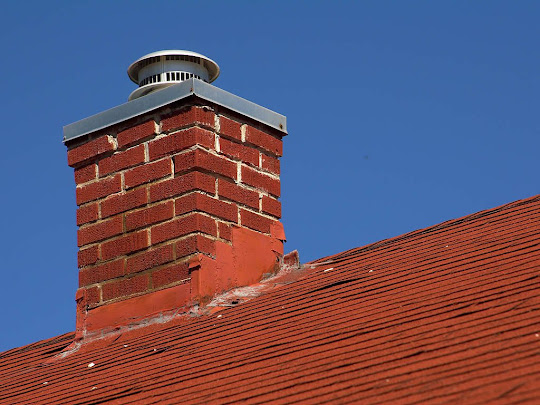A comprehensive guide on Reasons your Chimney makes Noise
Even though they appear silent, chimneys can become equally outspoken in response to different circumstances and difficulties. Homeowners should determine where these noises are coming from, because they might be anything from harmless creaks to more alarming crackles. Every sound has a unique story to tell, whether it’s due to internal causes like creosote buildup or exterior influences like wind.
Which are the most common reasons for chimney noise?
We will explore 25 unique reasons that make chimneys become unintended storytellers in this exploration, exposing the various elements that cause them to resonate with the sounds:
Wind-generated Turbulence: When strong winds strike a chimney, they can cause turbulence, which can produce unsettling noises. Chimney caps that are wind-resistant can lessen this problem.
Negative Air Pressure: Variations in the air pressure both inside and outside can cause downdrafts, which make noise. This issue can be resolved by properly ventilating the interior to balance the air pressure.
Creosote Accumulation: During combustion, creosote buildup in the chimney may produce popping or crackling noises. Frequent cleanings of the chimney lessen the chance of excessive creosote accumulation.
Debris or Animal Intrusion: Sounds like scratching or rustling may come from animals or other things in the chimney. The installation of a chimney cover is a practical defence against these incursions.
Temperature Changes: Metal components may expand or contract as a result of rapid temperature changes, producing noise. Metal elements surrounded by thermal insulation can benefit.
Unsecured Parts: Unsecured chimney components, like flashing or dampers, have the potential to shake and make rattling noises. This problem is fixed by securing and tightening loose components while conducting inspections.
Structural Settling: Chimneys may move somewhat as a house settles, causing creaking noises. Resolving foundational settling can lessen the effect on the structural integrity of the chimney.
Blocked Flue: Airflow can be obstructed by objects such as bird nests or trash, which can produce strange noises. Frequent chimney inspections assist in quickly identifying and clearing any obstructions.
Faulty Damper: Whistling or flapping sounds may be the result of damaged or improperly positioned dampers. The damper can be fixed or replaced to get it operating properly again.
Water Infiltration: When water seeps into the chimney, it may combine with creosote, producing noises like bubbling or hissing. Water intrusion is avoided by fixing leaks and installing a chimney cap.
Problems with Drafting: Intense airflow brought on by poor drafting might produce howling or moaning noises. Drafting can be enhanced by inserting a draft-inducing cap or adjusting the damper.
Gas igniting Delay: A loud ‘boom’ sound may be produced by delayed igniting in gas fireplaces. Delays can be avoided with routine maintenance, which includes inspecting the ignition system.
Thermal Expansion: Materials may expand or contract as a result of heating and cooling cycles, producing noise. By adding expansion joints, you can adapt to temperature fluctuations without making a lot of noise.
Combustion Imbalances: Popping or pounding noises in a fireplace might be caused by incomplete combustion. This problem is fixed by ensuring adequate fuel combustion and air delivery.
Problems with the Chimney Crown: Whistling or humming sounds may be caused by fractures or other damage to the chimney crown. Chimney Crown replacement or repair stops additional sound-related
Buildup of Soot: When soot burns, too much of it can make a loud noise. Using well-seasoned wood and cleaning your chimney on a regular basis can help reduce soot buildup.
Flue Size Mismatch: Noise problems may arise from a flue that is too large for the fireplace. To solve this issue, a professional assessment and potential flue resizing are necessary.
Bad Fireplace Design: Turbulence and raucous combustion might result from a poorly built fireplace. Speak with a fireplace design expert to maximise the layout for silent operation.
Chimney Leaks: Abnormal noises may arise from internal damage caused by water seeping in. Leaks and the noise they cause can be avoided with regular roof and chimney inspections and appropriate sealing.
Damaged Insulation: Sounds coming from inside the chimney may be amplified by deteriorating insulation. This can be fixed by replacing or strengthening the insulation.
Problems with the Throat Damper: The throat damper may malfunction and produce banging or scraping noises. Potential problems are resolved with routine damper maintenance and inspections.
Cold Chimney Syndrome: When using a fireplace, a cold chimney can produce noise and downdrafts. This syndrome can be lessened by prewarming the flue with newspaper or by adding a top-sealing damper.
Excessive Draft: Excessively powerful drafts can cause noise and turbulent airflow. Draft intensity can be managed by installing draft regulators or adjusting the damper.
Appliance vibrations: Appliances that are attached to the chimney may cause vibrations that are audible. Vibration-dampening devices can be installed to reduce these vibrations.
Expansion joints: During temperature fluctuations, noise may be produced if they are not installed correctly. Chimney noises can be reduced by making sure expansion joints are installed and maintained properly.
Maintenance of Your Chimney in Between Inspections
.jpg)
.jpg)
.jpg)

Comments
Post a Comment